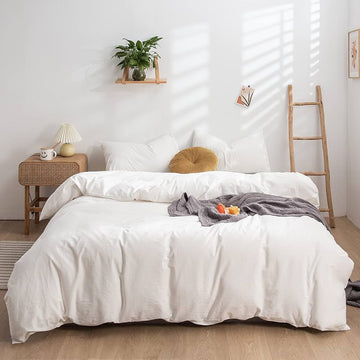
17 Must-Know Tips on How to Take Care of Genuine Sheepskin Sofas and Armchairs for Timeless Elegance
To maintain genuine sheepskin sofas and armchairs: shake off dust daily, vacuum lightly with a brush attachment, and brush the wool weekly. Keep it out of direct sunlight and away from heat. For spills, dab using cool water and mild wool detergent. Rotate cushions regularly and deep clean professionally every 6–12 months.
Understanding Genuine Sheepskin Furniture
Genuine sheepskin sofas and armchairs offer unmatched softness, natural warmth, and long-lasting luxury. Unlike faux alternatives, natural sheepskin regulates temperature, resists dirt, and adds an upscale aesthetic. However, its beauty demands specialized care to prevent leather damage and wool matting.
Initial Setup & Placement Tips
-
Avoid direct sunlight to prevent fading and hide drying.
-
Keep away from heat sources like radiators or fireplaces—they can cause brittleness.
-
Ensure airflow in your room to avoid mustiness.
-
Use protective pads or rugs under furniture legs to reduce wear on the hide.
Daily Maintenance Routine
-
Shake and fluff the wool daily to remove dust and debris.
-
Gently reshape the pile with your hands or a soft wool brush.
-
Blot spills immediately—use a dry, absorbent cloth, never rub.
-
Avoid sitting in damp clothing, as moisture may penetrate the hide.
Weekly Cleaning Guide
-
Vacuum lightly using a low‑suction attachment with a soft brush—nothing aggressive.
-
Brush the wool with a sheepskin-specific wire brush or pet slicker to maintain soft texture and prevent tangling.
Spot Cleaning for Spills
-
Work quickly: blot the spill with a clean cloth.
-
Only use cool water and a small amount of wool-friendly detergent (e.g. Eucalan or Woolskin).
-
Gently scrape solids off with a plastic spoon.
-
Never soak the hide—over-wetting can distort the leather backing.
-
Air-dry away from heat sources until fully dry before brushing.
Deep Cleaning Techniques
Reserved for every 6–12 months or major blemishes:
-
Professional cleaning by specialists in natural hide and wool is safest.
-
Home washing only if approved by manufacturer: hand wash in cool water with wool shampoo, lay flat to dry naturally—never tumble dry or spin.
Recommended Sheepskin Cleaning Products
| Allowed Products | To Avoid |
|---|---|
| Woolskin Sheepskin Shampoo | Bleach, ammonia, or alcohol-based cleaners |
| Eucalan Natural Wool Detergent | Enzyme-based or harsh detergents |
| Sheepskin Soft Spray Refreshers | Dry-cleaning solvents or carpet cleaners |
Always patch-test before applying to the whole surface.
Dealing with Odors
-
Air out the furniture weekly to release odor buildup.
-
Use baking soda: sprinkle it, leave overnight, then vacuum gently.
-
Use a light sheepskin refresher spray—specifically designed for wool hides.
Protection Against Stains
-
Drape throws or covers over high-use areas like armrests.
-
Apply a sheepskin-safe water repellent spray to prevent staining.
-
Rotate cushions regularly to even out wear and avoid hotspot discoloration.
Avoiding Common Maintenance Mistakes
-
Do not use standard leather or fabric cleaners on sheepskin.
-
Avoid brushing too hard or using stiff brushes.
-
Never expose to direct or prolonged sunlight.
-
Avoid over‑wetting during cleaning.
How to Store Sheepskin Furniture
-
Store in a cool, dry space—avoid attics or damp basements.
-
Use breathable cotton covers—avoid plastic wraps.
-
Air out monthly to prevent mildew or musty smells.
Rehydrating a Dry or Stiff Hide
-
Mist lightly with distilled water and gently massage the leather side.
-
Use a non‑greasy sheepskin conditioner sparingly.
-
Let the piece air-dry at room temperature, away from heat.
Repairing Minor Issues (Tears, Matting, Cracks)
-
Curtled or matted wool: steam carefully and brush gently.
-
Small tears: repair with natural sheepskin patches or consult a professional.
-
Stiff spots: apply leather softener specifically formulated for sheepskin, very lightly.
When to Get Professional Help
Seek expert care if:
-
Stains or odors are persistent or worsening.
-
Leather coating is cracking or shedding.
-
Home care makes the problem worse.
Choose a sheepskin upholstery specialist for best results.
Sheepskin & Pets: Dos and Don’ts
-
Use pet-safe repellents on furniture margins to discourage clawing.
-
Keep your pet’s nails trimmed to avoid snags.
-
Vacuum pet hair using a rubber brush or low‑suction tool.
Caring for Different Sheepskin Types
| Type | Care Tips |
|---|---|
| Short Wool | Easier to maintain, less prone to tangling |
| Long Wool | Requires frequent brushing to prevent matting |
| Dyed Sheepskin | Avoid bleach or cleaners that strip or fade color |
| Natural Sheepskin | Durable but still needs moisture and shade control |







comments